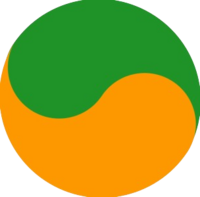Ormå: Difference between revisions
Jukethatbox (talk | contribs) No edit summary |
Jukethatbox (talk | contribs) No edit summary |
||
| Line 16: | Line 16: | ||
| fam2 = Ulmic | | fam2 = Ulmic | ||
| fam3 = Umic | | fam3 = Umic | ||
| ancestor1 = | | ancestor1 = Ancient Ormå | ||
| nation = Ormå Nation, Southern Ulmis | | nation = Ormå Nation, Southern Ulmis | ||
| minority = Southern Ulmis, Moshuria | | minority = Southern Ulmis, Moshuria | ||
Revision as of 17:16, 6 June 2024
This article is a construction site. This project is currently undergoing significant construction and/or revamp. By all means, take a look around, thank you. |
| Ormå | |
|---|---|
| ormå pippi | |
 The knåsko, the symbol of the Ormå people. | |
| Pronunciation | [ormɔ ˈpi.ppi] |
| Created by | Jukethatbox |
| Date | 2023 |
| Native to | Ormå Nation |
| Ethnicity | Ormå people |
| Native speakers | 120,000 (400 BH) |
Yeldhic
| |
Early form | Ancient Ormå
|
| Official status | |
Official language in | Ormå Nation, Southern Ulmis |
Recognised minority language in | Southern Ulmis, Moshuria |
| Regulated by | Ormả Committee(Kikilẽ Ormå) |
Ormå(/ormo/, ormå pippi; Ormå: [ormɔ ˈpi.ppi]) is a language spoken by the Ormå people of the southern areas of the tundras of Ulmis. It is an Umic language, so it is related to the languages of Umį and Pailä. The Umic languages themselves are a sub-branch of the Ulmic languages, which includes Pêrsir and Zadję.
It is a fusional SOV language that, like all other Ulmic languages, heavily features nasalised vowels.
Etymology
Ormå comes from Ancient Ormå ormorri, a term referring to a tundra that is naturally protected from harsher winds by some other geographical feature, typically hills. ormorri may come from Proto-Ulmic *olmuy, "silence", which would make Pêrsir ulmii, "volume", cognate with ormorri.
Phonology
Orthography
Ormå uses a modified form of the Standard Ulmic Script(SUS)[1], which includes a special letter, ⟨å⟩, that represents the phoneme /ɔ/, which among Ulmic languages is unique to Ormå. Additionally, the common digraphs ⟨sk⟩ and ⟨zg⟩ are pronounced /sˠ/ and /zˠ/ respectively, instead of /sk̚/ and /zg̚/ in other Ulmic languages like Pêrsir or Pailä.
Consonants
| Bilabial/ Labiodental |
Alveolar | Velar | Palatal | ||
|---|---|---|---|---|---|
| Plosive | pulmonic | p b | t d | k g | c |
| aspirated | pʰ bʱ | tʰ dʱ | kʰ gʱ | cʰ | |
| Trill/tap | r~ɾ | ||||
| Nasal | m | n̥ n | ŋ | ||
| Fricative | pulmonic | f v | s z | x | ç |
| velarised | sˠ zˠ | ||||
| Approximant | pulmonic | w | j | ||
| lateral | l | ʎ | |||
Vowels
| Front | Central | Back | |
|---|---|---|---|
| Close | i y | u | |
| Close-mid | e~ə | o | |
| Open-mid/Near-open | æ | ɔ | |
| Open | a | ||
Nasalised vowels
| Front | Central | Back | |
|---|---|---|---|
| Close | ĩ ỹ | ũ | |
| Close-mid | ẽ | õ | |
| Open | ã |
Stress
Ormå has no stress pattern, though most speakers tend to go towards paroxytonic stress.
Morphology
Nouns
Gender
Ormå has four grammatical genders: masculine, feminine, passive neuter and active neuter. The distinction between passive and active neuter is quite vague, though the general pattern is that if it is a countable geographical feature that moves by itself, such as a river(mittä), it is active and if not, like a watershed(nncẽ), it is passive. However, some words, like krỹse("snowy mountain"), which would logically be passive, is actually active, because in Ormå mythology, the God of Snowy Mountains, Ukkäjan, supposedly causes avalanches to deter climbers of Mount Kakkijajå, thus making snowy mountains active deterers of climbers. Many of these logical exceptions in the neuter gender are rooted in Ormå mythology.
Number
Ormå, like all Ulmic languages, differentiates between single, dual and plural grammatical number, which vary according to the four grammatical genders of masculine, feminine, passive neuter and active neuter.
number gender |
Singular | Dual | Plural | |
|---|---|---|---|---|
| Masculine | thåsk "rock" |
thåski | thåskir | |
| Feminine | skyd "bulb" |
skydje | skydjus | |
| Neuter | Passive | nncẽ "watershed" |
nncẽmmi | nncẽmmä |
| Active | mittä "river" |
mittäpyr | mittäfyr | |
Pronouns
Demonstrative
Demonstrative pronouns in Ormå are placed after the noun and fall into three categories: adjacent(next to something), near and far. For example, thåsk khe means "the rock next to [me]", skydje nhus means "these two bulbs" and mittäfyr käller means "those rivers (over there)".
| Adjacent | Near | Far | |
|---|---|---|---|
| Singular | khe | khes | khest |
| Dual | nhu | nhus | nhussr |
| Plural | kär | källä | käller |
Strong verbs
Kokkra
Kokkra, "to be", is the main copula in Ormå. It has quite bizarre conjugation, though it is a very common verb.
| Singular | Plural | ||
|---|---|---|---|
| 1st person | soor | sooråj | |
| 2nd person | stukk | stukkää | |
| 3rd person | Objects | skkoke | skkokej |
| People | kokkår | kokkäre | |
Other resources
- ^ har har
